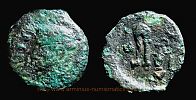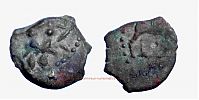|
|
|
|
|
|
|
|
|
|
|
|
|
|
|
|
|
|
|
|
|
|
|
|
|
Corduba
|

|


|

|
Córdoba is a city in Andalusia, southern Spain, and the capital of the province of Córdoba.
The first historical mention of a settlement dates to the Carthaginian expansion across the Guadalquivir, when general Hamilcar Barca renamed it Kartuba, from Kart-Juba, meaning "the City of Juba", a Numidian commander. Córdoba was conquered by the Romans in 206 BC and named as Corduba. In 169 Roman consul M. Claudius Marcellus founded a Latin colony alongside the pre-existing Iberian settlement. It became a colonia with the title Patricia, between 46 and 45 BC.
In antiquity most time it was a Roman settlement, then colonized by Muslim armies in the eighth century. It became the capital of the Islamic Emirate, and then of the Caliphate of Córdoba, including most of the Iberian Peninsula. It was recaptured by Christian forces in 1236, during the Reconquista.
36 Dateien, letzte Aktualisierung am %15. %737 %2017
Album 50 mal aufgerufen
|
|
|
|
|
Ebusus
|

|


|

|
Ibiza is an island in the Mediterranean Sea off the east coast of Spain. The official name of the island is in Catalan Eivissa. Its name in Spanish is Ibiza. The Roman name was Ebussus or Ebusus, ancient names 'ybshm, 'yboshim, 'Iboshim, Aiboshim during Phoenician rule.
In 654 BC, Phoenician settlers founded a port on Ibiza. With the decline of Phoenicia after the Assyrian invasions, Ibiza came under the control of Carthage, also a former Phoenician colony. During the Second Punic War, the island was assaulted by the two Scipio brothers in 217 BC but remained loyal to Carthage. With the Carthaginian military failing on the Iberian mainland, Ibiza was last used, 205 BC, by the fleeing Carthaginian General Mago. Ibiza negotiated a favorable treaty (Foedus) with the Romans, which spared Ibiza from further destruction and allowed it to continue its Carthaginian-Punic institutions, traditions and even coinage well into the Empire days, when it became an official Roman municipality.
After the fall of the Western Roman Empire and a brief period of first Vandal and then Byzantine rule, the island was conquered by the Moors in 902.
6 Dateien, letzte Aktualisierung am %18. %333 %2017
Album 38 mal aufgerufen
|
|
|
|
|
|
|
|
|
|
|
|
|
|
| 53 Alben auf 2 Seite(n) |
1 |
|